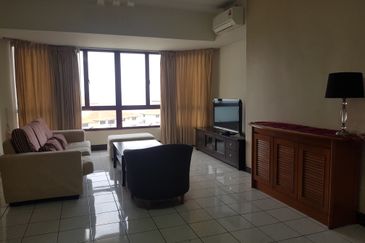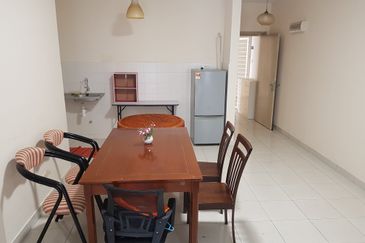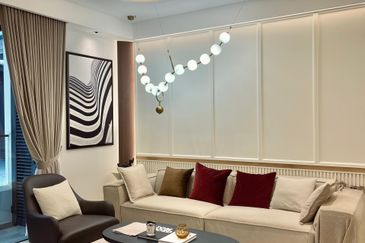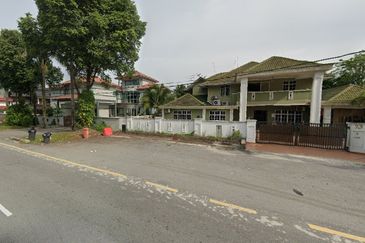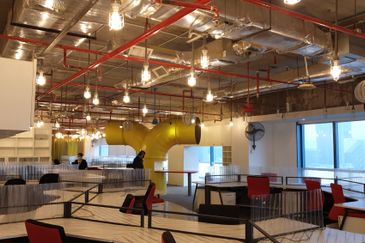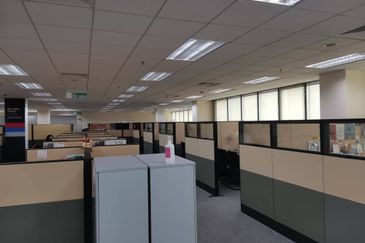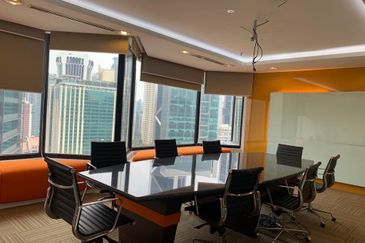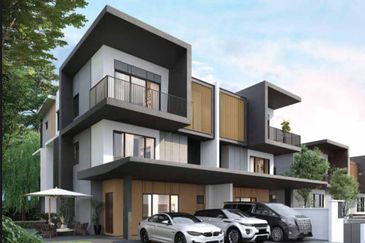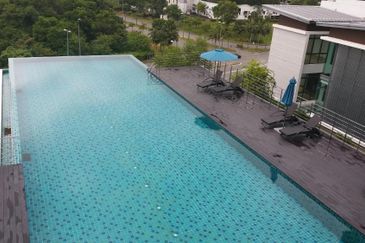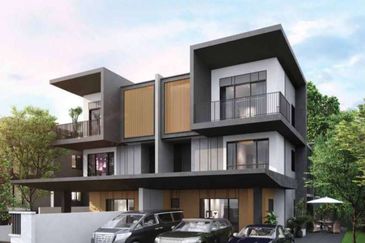The global economic downturn and the spread of the Influenza A (H1N1) pandemic have put a dent in the global tourism industry. Malaysia’s hospitality sector has not been immune to such shocks. But as the world economy mends, hoteliers are positioning themselves to ride the upturn by pushing ahead with new hotel launches this year and the next. Giving the industry a boost could be the government’s plans for more aggressive tourism promotion under Budget 2010, which has proposed an RM899 million allocation to further develop the industry.
Since the onset of the financial crisis, tourist arrivals have slowed considerably. Tourist arrivals in 2Q2009 increased only 4.7% y-o-y compared with a 29.3% jump in 2Q2007 and 3.9% in 2Q2008, according to Tourism Malaysia. In 1Q2009, the increase was an anaemic 2.2% y-o-y.
The hotel occupancy rate has also dropped, particularly in 4Q2008 and 1Q this year but has improved recently since 3Q, say industry players.
Malaysian Association of Hotels (MAH) vice-president Ivo Nekvapil tells City & Country that the occupancy rate in Malaysia dropped in 4Q2008 and 1Q2009, but has climbed up since 2Q this year, with June and July recording a rate of about 70%. The hotel occupancy rate in 4Q2008 was 68.7% while for 1Q2009 it was 60.3%.
New hotels
The downturn has not stopped new hotels from opening their doors, and more are slated to do so before the end of the year. Among the new hotels that opened this year are Thistle Hotel in Johor Baru and Port Dickson. Eastin Penang is slated for opening on Nov 12, while Hard Rock Hotel Penang officially opens early next year. International players such as Four Seasons, Raffles and Starwood Hotels & Resorts will also have hotels coming up here in the near future.
Hard Rock Hotel soft launched on Sept 19. The hotel is the 11th Hard Rock Hotel in the world, and the only one with absolute beach frontage. Its general manager John Primmer says the hotel is not able to gauge when the global economic and the H1N1 situations will be cleared up, and hence the hotel will open as scheduled.
“We are strategising based on the current market situation and demands. Our opening rates are very competitive and we have a product that has its own identity. For a start, we are targeting the local and regional market as there will be more demand for local vacations due to the H1N1 scare and the economic situation,” he tells City & Country.
 It won’t be difficult for Hard Rock Hotel to stand out among its competitors with its musical entertainment theme. “Our guests can hear live bands play every night and check out over 500 original memorabilia from rock stars of different decades decorating the walls of the hotel,” says Primmer.
It won’t be difficult for Hard Rock Hotel to stand out among its competitors with its musical entertainment theme. “Our guests can hear live bands play every night and check out over 500 original memorabilia from rock stars of different decades decorating the walls of the hotel,” says Primmer.
The hotel industry in Penang, is expected to see potential investments exceeding RM1 billion over the next five years following the listing of George Town as a Unesco World Heritage site, Marco G Battistotti, the MAH Penang chapter chairman was reported as saying recently.
At least five 5-star boutique hotels with room rates of between RM500 and RM600 per night will be completed by 2014 in George Town’s core heritage zone, which has a height restriction of 18 metres or five storeys.
Right timing?
Why don’t hotel operators wait until the economy is safely on its road to recovery or for the H1N1 situation to clear before opening their hotels?
Zerin Properties chief executive Previndran Singhe says: “Owners have to open [new hotels] as it would be detrimental to their cash flow if they just stopped development. It is better to proceed with pre-opening, test the hotel out and then have the full scale launch towards later,” he tells City & Country.
He adds that occupancies took a hit for the first four months of this year but has since seen an increase to previous levels.
For some hotel operators, there is no such thing as “good timing” to open a hotel. There will always be bad events such as the Japanese encephalitis outbreak, Sept 11 terrorist attacks, Asian financial crisis, and SARS (severe acute respiratory syndrome) in the past, says general manager of Empire Gallery and Hotel Ng Yee Ming.
“For us, the potential that we see in this area (Subang) and the surrounding areas is tremendous. Many commercial areas have opened and businesses are moving,” Ng tells City & Country.
Mammoth Empire plans to open its first hotel, Empire Hotel in Subang, by February. Of course, it did not rush into this new business without doing its homework.
“The government is targeting 20 million tourists this year and so far, we have had 14.4 million. It is not bad. We checked with about 30 hotels of 4- to 5-star standard in Klang Valley. For the first few months of this year occupancy rates dropped about 15% but in June and July, especially July, many hotels achieved 80% to 90% occupancy. Hotels in Subang, such as Holiday Villa, have an average occupancy rate of 65% to 75%.
“Maybe it is the government’s stimulus packages which are helping to restore confidence and as such, there is more travel. During the SARS epidemic, people were complaining that the market was dead but this time, the H1N1 pandemic has not affected occupancy rates as much. The only thing I have heard is the Middle East market (tourists) has dropped.
“Amazingly, average room rates are also high. For example, based on our survey in July, a 5-star hotel near KLCC is running at RM700 per night,” Ng says.
Demand vs supply
So is the slew of hotel openings in tandem with the demand? Managing director of Value Hospitality, Dennis Tan, says there are currently no signs of a rush to build hotels, unlike in 1994 to 1997, which resulted in an oversupply situation.
“There appears to be quite a few 3-star hotels under planning in view of the better results achieved by the industry. Demand had been steadily improving since 2004,” Tan adds.
Zerin’s Previndran says these hotel openings will ride on the demand which is expected to be sustained in the next five to 10 years.
“Malaysia’s tourism market is big and we do see a need for branded budget hotels. Hotels like Tune Hotels.com, Ibis and Holiday Inn Express will see huge growth in the coming years. The demand for boutique hotels is very strong but we lack strong boutique hotels.
“The tourism industry is the single biggest industry in the world and is expected to boom in the coming years. We have all it takes to become the world’s best destination; we just need to work on the tourism inventories and market them well,” Previndran says.
Industry players are optimistic that the local hospitality industry will continue to reap good harvests in the coming years. With the global economy showing signs of recovery, the prospects for Malaysia’s hospitality sector certainly appears promising.
Since the onset of the financial crisis, tourist arrivals have slowed considerably. Tourist arrivals in 2Q2009 increased only 4.7% y-o-y compared with a 29.3% jump in 2Q2007 and 3.9% in 2Q2008, according to Tourism Malaysia. In 1Q2009, the increase was an anaemic 2.2% y-o-y.
The hotel occupancy rate has also dropped, particularly in 4Q2008 and 1Q this year but has improved recently since 3Q, say industry players.
Malaysian Association of Hotels (MAH) vice-president Ivo Nekvapil tells City & Country that the occupancy rate in Malaysia dropped in 4Q2008 and 1Q2009, but has climbed up since 2Q this year, with June and July recording a rate of about 70%. The hotel occupancy rate in 4Q2008 was 68.7% while for 1Q2009 it was 60.3%.
New hotels
The downturn has not stopped new hotels from opening their doors, and more are slated to do so before the end of the year. Among the new hotels that opened this year are Thistle Hotel in Johor Baru and Port Dickson. Eastin Penang is slated for opening on Nov 12, while Hard Rock Hotel Penang officially opens early next year. International players such as Four Seasons, Raffles and Starwood Hotels & Resorts will also have hotels coming up here in the near future.
Hard Rock Hotel soft launched on Sept 19. The hotel is the 11th Hard Rock Hotel in the world, and the only one with absolute beach frontage. Its general manager John Primmer says the hotel is not able to gauge when the global economic and the H1N1 situations will be cleared up, and hence the hotel will open as scheduled.
“We are strategising based on the current market situation and demands. Our opening rates are very competitive and we have a product that has its own identity. For a start, we are targeting the local and regional market as there will be more demand for local vacations due to the H1N1 scare and the economic situation,” he tells City & Country.
 It won’t be difficult for Hard Rock Hotel to stand out among its competitors with its musical entertainment theme. “Our guests can hear live bands play every night and check out over 500 original memorabilia from rock stars of different decades decorating the walls of the hotel,” says Primmer.
It won’t be difficult for Hard Rock Hotel to stand out among its competitors with its musical entertainment theme. “Our guests can hear live bands play every night and check out over 500 original memorabilia from rock stars of different decades decorating the walls of the hotel,” says Primmer.The hotel industry in Penang, is expected to see potential investments exceeding RM1 billion over the next five years following the listing of George Town as a Unesco World Heritage site, Marco G Battistotti, the MAH Penang chapter chairman was reported as saying recently.
At least five 5-star boutique hotels with room rates of between RM500 and RM600 per night will be completed by 2014 in George Town’s core heritage zone, which has a height restriction of 18 metres or five storeys.
Right timing?
Why don’t hotel operators wait until the economy is safely on its road to recovery or for the H1N1 situation to clear before opening their hotels?
Zerin Properties chief executive Previndran Singhe says: “Owners have to open [new hotels] as it would be detrimental to their cash flow if they just stopped development. It is better to proceed with pre-opening, test the hotel out and then have the full scale launch towards later,” he tells City & Country.
He adds that occupancies took a hit for the first four months of this year but has since seen an increase to previous levels.
For some hotel operators, there is no such thing as “good timing” to open a hotel. There will always be bad events such as the Japanese encephalitis outbreak, Sept 11 terrorist attacks, Asian financial crisis, and SARS (severe acute respiratory syndrome) in the past, says general manager of Empire Gallery and Hotel Ng Yee Ming.
“For us, the potential that we see in this area (Subang) and the surrounding areas is tremendous. Many commercial areas have opened and businesses are moving,” Ng tells City & Country.
Mammoth Empire plans to open its first hotel, Empire Hotel in Subang, by February. Of course, it did not rush into this new business without doing its homework.
“The government is targeting 20 million tourists this year and so far, we have had 14.4 million. It is not bad. We checked with about 30 hotels of 4- to 5-star standard in Klang Valley. For the first few months of this year occupancy rates dropped about 15% but in June and July, especially July, many hotels achieved 80% to 90% occupancy. Hotels in Subang, such as Holiday Villa, have an average occupancy rate of 65% to 75%.
“Maybe it is the government’s stimulus packages which are helping to restore confidence and as such, there is more travel. During the SARS epidemic, people were complaining that the market was dead but this time, the H1N1 pandemic has not affected occupancy rates as much. The only thing I have heard is the Middle East market (tourists) has dropped.
“Amazingly, average room rates are also high. For example, based on our survey in July, a 5-star hotel near KLCC is running at RM700 per night,” Ng says.
Demand vs supply
So is the slew of hotel openings in tandem with the demand? Managing director of Value Hospitality, Dennis Tan, says there are currently no signs of a rush to build hotels, unlike in 1994 to 1997, which resulted in an oversupply situation.
“There appears to be quite a few 3-star hotels under planning in view of the better results achieved by the industry. Demand had been steadily improving since 2004,” Tan adds.
Zerin’s Previndran says these hotel openings will ride on the demand which is expected to be sustained in the next five to 10 years.
“Malaysia’s tourism market is big and we do see a need for branded budget hotels. Hotels like Tune Hotels.com, Ibis and Holiday Inn Express will see huge growth in the coming years. The demand for boutique hotels is very strong but we lack strong boutique hotels.
“The tourism industry is the single biggest industry in the world and is expected to boom in the coming years. We have all it takes to become the world’s best destination; we just need to work on the tourism inventories and market them well,” Previndran says.
Industry players are optimistic that the local hospitality industry will continue to reap good harvests in the coming years. With the global economy showing signs of recovery, the prospects for Malaysia’s hospitality sector certainly appears promising.
This article appeared in City & Country, the property pullout of The Edge Malaysia, Issue 779, Nov 2 – 8, 2009.
SHARE
TOP PICKS BY EDGEPROP
RENT
FEATURED
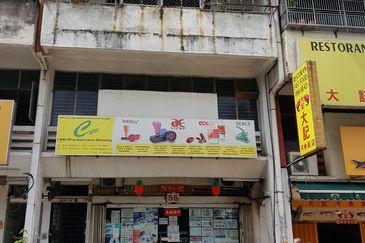
Bandar Baru Sri Petaling
Bandar Baru Sri Petaling, Kuala Lumpur
RM 4,000
- beds |
2 bath |
2000 sqft
RENT
FEATURED
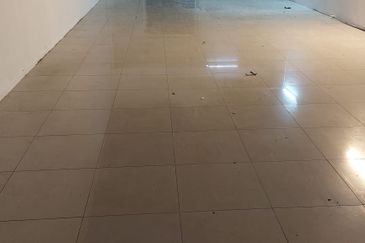
Temasya Glenmarie (Industrial)
Shah Alam, Selangor
RM 3,500
- beds |
- bath |
2200 sqft
SALE
FEATURED
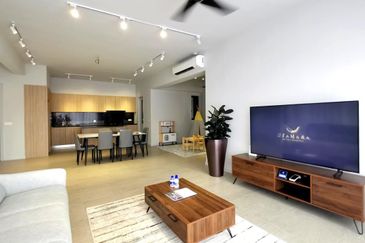
Utamara Boutique Residences
Petaling Jaya, Selangor
RM 1,558,980
3 beds |
2 bath |
1582 sqft
RENT
FEATURED
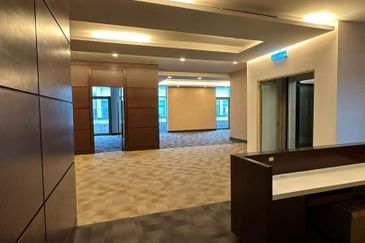
Damansara Heights
Damansara Heights, Kuala Lumpur
RM 32,952
- beds |
- bath |
5492 sqft

